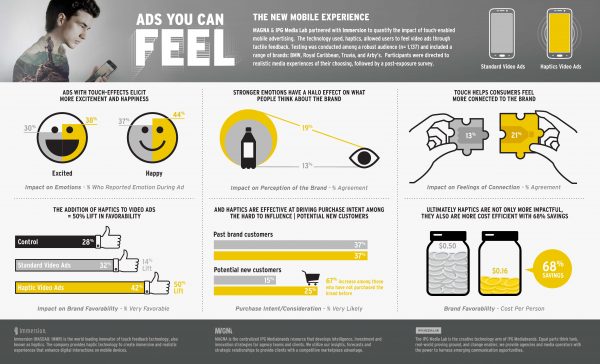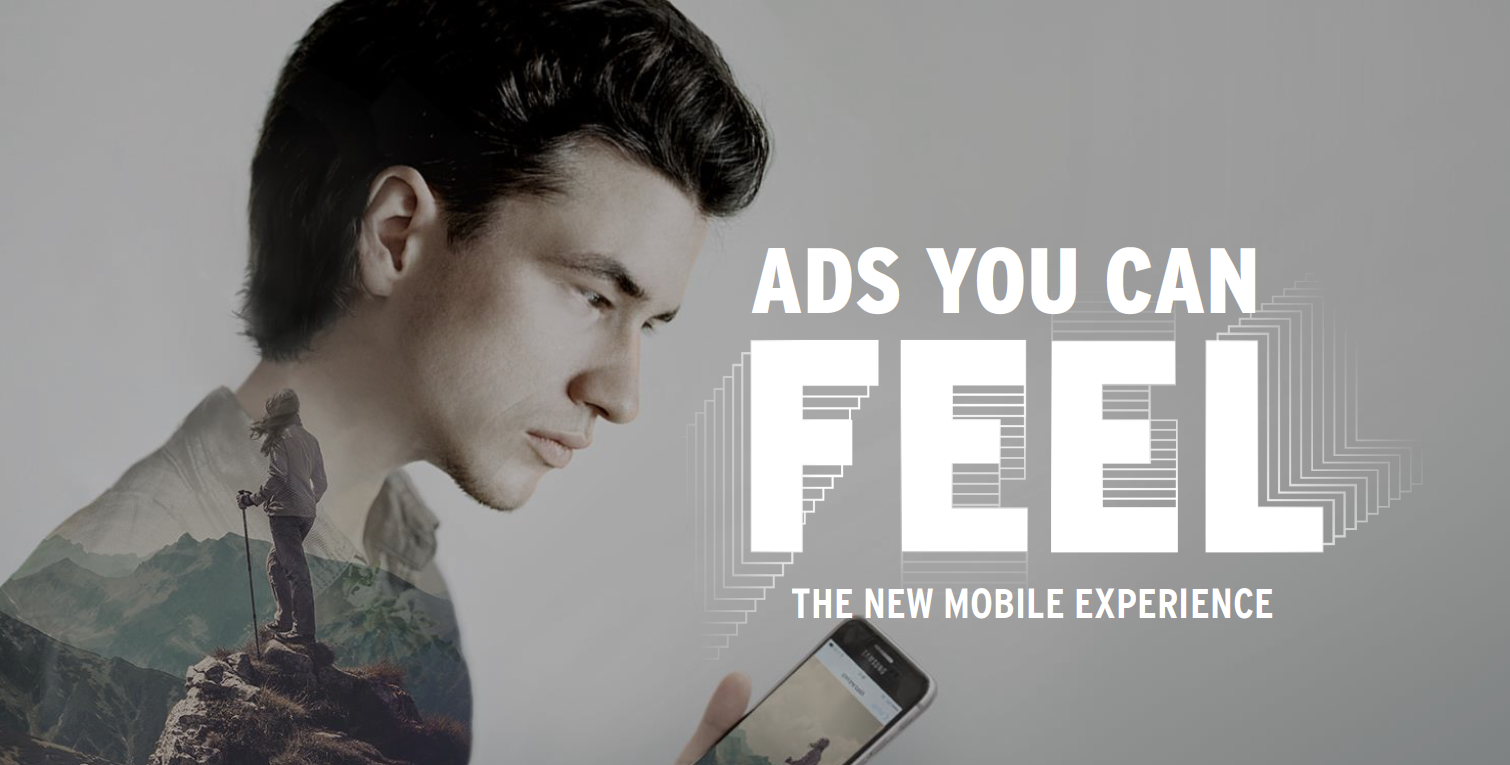Click here to download a pdf version of the report.
IPG Media Lab, the creative technology arm of IPG Mediabrands, in partnership with Immersion Corp. today announced the results of a scientific media trial examining the impact of touch-enabled advertising created with haptic technology.
The resulting report, Ads You Can Feel: The New Mobile Experience, shares best practices, findings and insights on leveraging users’ senses, including sight, sound, motion, and now, touch, to create visceral mobile experiences. Over the course of the study, touch-enabled ads from a wide array of industry sectors, including automotive, hospitality and food & beverage were used to test consumers’ reaction to the experience.
The study of Immersion’s haptic technology, which enables users to feel touch effects on digital devices, found that adding touch to ads increases engagement and users’ sense of connection with a brand. Among the most notable findings is that haptic technology elicits a strong emotional response, particularly increasing levels of happiness and excitement.
In an ever-fragmented consumer landscape, brands are still determining how to best leverage technology and enable user interactivity. This served as the key element behind the launch of the media trial, which used seven distinctive ad types across two variant modes (skippable and non-skippable) to measure engagement and connectivity levels of haptic technology. Leading brands from a range of industry verticals, such as BMW, Royal Caribbean, Arby’s, and Truvia participated in this innovative media trial.
Key highlights from the study include:
• Haptic technology creates a more emotional experience, leading to consumers feeling more “excited” and “happy” during ad exposure.
• Engaging the sense of touch drives a 62% increase in feelings of connection with the advertised brand, which is often very difficult for marketers to do.
• Ultimately, adding haptics to video ads leads to a 50% lift in brand favorability, which equals 68% cost savings over the cost of increasing brand favorability using ads without haptic technology.
• Effectiveness of haptics spans across standard demographics, even driving purchase intent among the hard to influence (potential new customers). However, it’s important to note that early tech adopters are especially responsive to ads enabled with touch technology.

For more insights as well as the best practices for implementing haptics, click here to download the report

